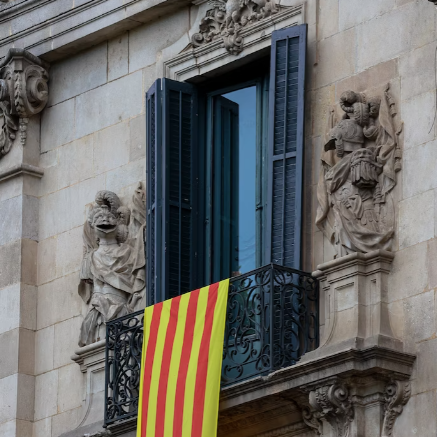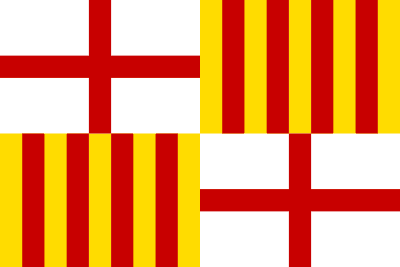Important Flags in Barcelona
Exploring the vibrant streets of Barcelona, whether independently or with one of our guided day tours in Barcelona, you may come across multiple flags that share similar colors and designs. Amidst this visual tapestry, it can be confusing, especially with the varying political significance attached to each flag. Whether you’re a returning visitor or embarking on your first trip to Barcelona, it can be helpful to familiarize the differences among these flags to better understand the history of the region.
La Senyera

Photo by Iggy Pacanowski on Unsplash
The official flag of Catalonia is commonly referred to as the “Senyera,” which is Catalan for flag. Holding a significant historical meaning, the design represents the coat of arms of the Crown of Aragon, which ruled over the region during the Medieval period. With its red and gold stripes, the flag is believed to date back to the 9th century as one of the oldest flags still used in Europe. The Senyera is far less controversial than most of the other flags on this list and is a proud symbol predominately used to represent Catalonia and its culture.
La Estelada Blava

The Estelada Blava, also known as the “Blue Estelada” is a variant of the Estelada flag. Traveling around you will quickly notice that this is the most prevalent flag in the city. It serves as the symbol of the separatist movement in Catalonia, representing their strong desire for independence from the rest of Spain. Although the blue triangle and white star are said to be inspired by the Cuban flag, Catalonia’s independence movement dates back to the War of the Spanish Succession when Catalonia lost much of its autonomy and rights.
La Estelada Vermella

(Photo source: Wikipedia, http://goo.gl/YOxQFB)
Although very similar to its blue twin, the Estelada Vermella, also known as the “Red Estelada” holds a different political meaning. While those who wave this flag also advocate for the desire for Catalonian independence, they also advocate a socialist form of government. This flag is representative of left-wing movements that emerged during the 70s and have persisted to this day. Furthermore, it serves as a visible symbol of their commitment to forging a future that combines Catalonian autonomy with progressive socio-economic ideals.
La Rojigualda

La Rojigualda- Flag of Spain
The official flag of Spain showcases the familiar red and gold stripes seen in the previous three flags mentioned, also featuring the coat of arms of the Spanish royal crown. In 1843, Queen Isabella II officially declared this flag as the country’s official emblem. As you explore Barcelona, you may notice that the Spanish national flag is less commonly seen, primarily due to the complex political dynamics (not to mention, the Catalan people have a very Catalonia-specific sense of pride).
The Flag of Barcelona

Photo Source: Wikipedia, https://en.wikipedia.org
The flag of the City of Barcelona combines elements of Catalan symbolism. Blending the cross of Saint George (the patron saint of Catalonia) with the iconic red and gold stripes of La Senyera, the regional flag. Representing the city’s strong ties to Catalan heritage and its unique cultural identity within the broader context of Catalonia, it serves as a symbol of local pride and affiliation. Though less common than La Senyera or La Estelada, it is generally flown over municipal buildings, including the city hall.
FC Barcelona Flag

Photo by AXP Photography on Unsplash
Indeed, FC Barcelona, also known as Barça, has its official flag reflecting its strong connection to Catalonia. Playing homage to the regional flag, La Senyera Catalonia’s iconic red and gold stripes made their way into this flag too. The stripes are displayed on the team’s crest, alongside the cross of Saint George. The flag also features blue and red stripes, which are representative of the team’s colors and are widely recognized by football enthusiasts around the world.
Learn about Barcelona with us!
If you want to travel around the city with the guidance of an experienced Barcelona private tour guide and learn all about all the different flags we have in the city, we highly recommend joining our exclusive city tours. Our knowledgeable guides will provide you with in-depth insights into the historical and political backgrounds of the different flags, allowing you to gain a comprehensive understanding of Barcelona’s rich cultural tapestry. Immerse yourself in the fascinating world of Barcelona’s flags and their stories by joining us on our captivating and informative city tours!
